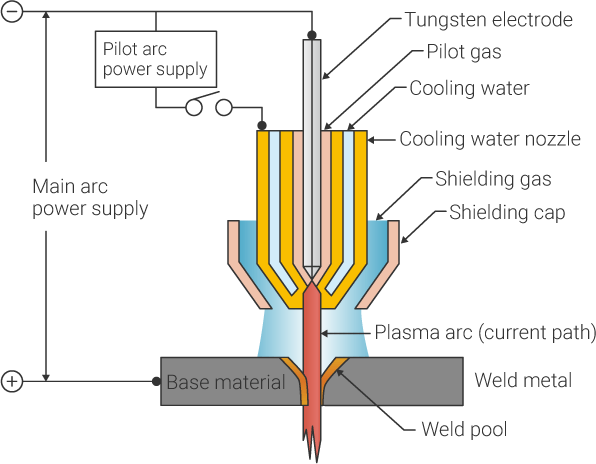Plasma welding
Plasma welding is a welding method that uses a plasma arc. This page introduces the principles and weld characteristics related to plasma arc generation using a pilot gas, and the difference from TIG welding.
Plasma welding is a method that strikes a plasma arc between the electrode and base material and uses it for welding. It is classified as a non-consumable electrode type and, as with TIG welding, it uses a tungsten rod for the electrode. The difference is that it uses a nozzle to cover the electrode and a plasma gas to prevent the arc from spreading.
The resulting high heat concentration enables high-speed welding with a narrow bead and less distortion. Due to its highly directional arc, plasma welding is suitable for fillet welds and can eliminate spatter. Its low electrode consumption allows high-quality welding for a long time. Although the welding machines are expensive compared to TIG welding machines, the running costs are low. This is one of the best methods for automatic welding.
The pilot gas (inert gas) passes through the torch and is ionized by the pilot arc heat (plasma conversion). The ionized pilot gas forms a plasma jet, spouts from the nozzle hole and acts as the conductor for the arc current. This narrows down the arc to give it high energy density and spout from the insert tip hole. The spread of the arc is limited to about one-fourth that of TIG welding, resulting in an arc with higher current density.






